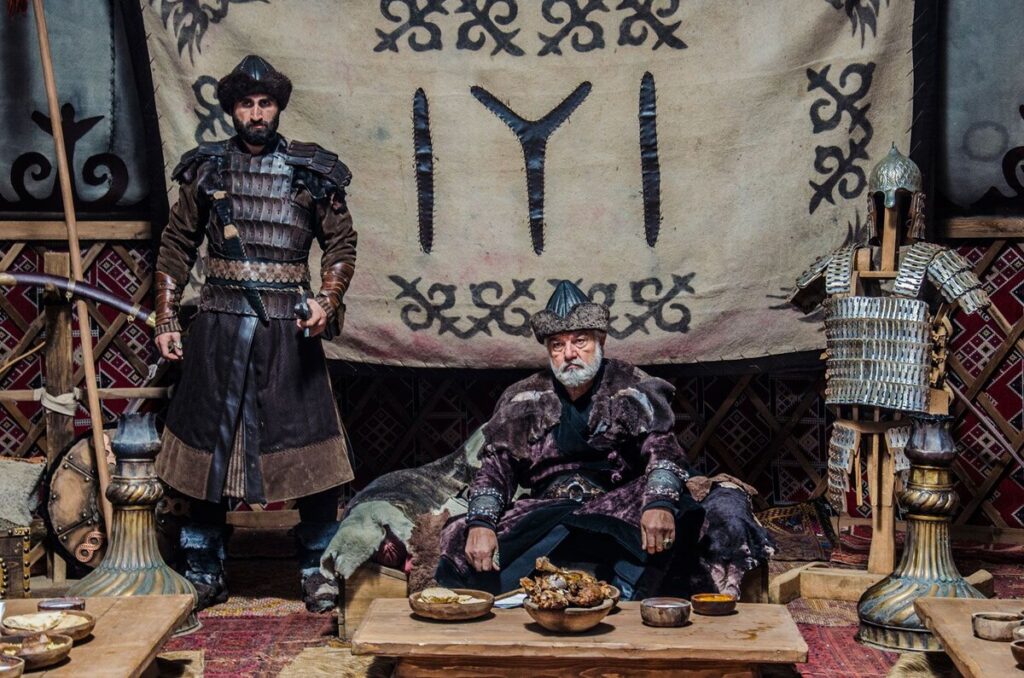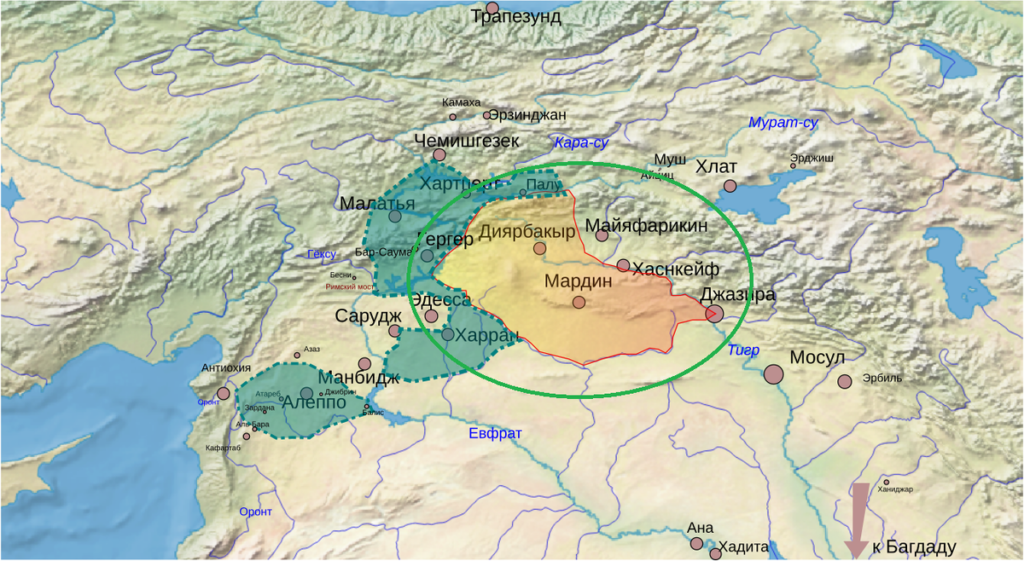The origin of kaya is shrouded in mystery. But traditionally they were considered one of the 24 original Oguz tribes and usually stood at the head of their people. It is not for nothing that the Turkmen proverb says that «people are led by the Kayy and Bayat tribes.» Comparing the Oguz tagmas and the signs of the more ancient steppe clans, scientists have suggested that initially this nomadic union was part of the Xiongnu Empire, then joined the proto-Mongol state of Xianbi, and in the early Middle Ages it was Turkified.

During the era of Oguz migration to the steppes east of the Caspian Sea, the Kayas led this association and founded the dynasty of the Oguz Yabgu. But it seems that it was too big and branched tribe (no wonder its name translates as «strong»), and there was not enough place under the sun for everyone.
Then part of the clan went to the Black Sea steppes – the Eastern Slavs began to call them kovuys or kaepichi. These nomads were an integral part of the «black hoods», the Turkic allies of the ancient Russian principalities. A version is put forward that the city of Kiev got its name from their name, although it does not fit the time.
During the 11th century, the Oghuz state disintegrated, and the Kayas continued to exist within the Seljuk state. But they were not his subjects, but roamed freely in the territory of Northern Khorasan. At that time, many Oghuz became Muslims and later this branch of the Turkic peoples was known as the Turkmens.
The Kayas came to West Asia in three different branches and at different times. The first migrated to the region with the Seljuks after the victory in the Battle of Manzikert in 1071, which marked the beginning of the end of Byzantium. Soon the Artukid principality was founded at the junction of modern Iraq and Syria.

It was one of the most powerful Seljuk principalities. And because of its geographical location, it began to fight against the crusaders before anyone else. Their most famous leader was the great Muslim hero il-Ghazi, who defeated the crusaders in the battle of the Bloody Field in 1118. This was the first time that Turks and Europeans seriously crossed swords.
Another branch of the Kaya remained in the vicinity of Merv at that time and entered Anatolia during the expansion of the Khorezmshakh state, of which they were originally mercenaries. Then the beylik of Chobanogullary was founded in the vicinity of the ancient city of Sinop. Steppe warriors quickly became seafarers, and in 1223 they made a lightning raid on the Crimean trading center Sudak, receiving assurances from local Russian and Kipchak princes about their subordination.
And finally, the last fragment of the kaya migrated to Asia Minor during the Mongol invasion. A group of warriors in the number of 500 tents (i.e., 500 families) under the command of a certain Ertogrula, she received from the Seljuk sultans a place to settle on the very border with the Greeks. It was from this man, who lived for a very long time, that the Ottoman family had its origin.
The problem is that until the middle of the 15th century, i.e., before the capture of Constantinople, the Ottoman history was not recorded. The earliest genealogies of this dynasty did not claim that it was descended from the Kaya tribe. But then it was accepted as an immutable truth and we will never be able to figure out how everything was there.
Kayas proved their usefulness during the Ottoman expansion in the Balkans. Many then settled in the south and east of Bulgaria and in the region of the Vardar River in Macedonia. In the last named place, Byzantium previously allocated land to nomads who converted to the Christian faith and became part of the imperial guard.
In the first century and a half of the Ottoman Empire, warriors from the Kaya clan were important and often received high positions. Actually, they personified the state, as the support of the throne and relatives of the sultans. But the introduction of the devshirme system, when the foot army and the civil administration began to be formed from Christian boys raised in Islam, led to their removal from power.
Only the Amuka tribe, descended from the descendants of Gunduz-Alp, the elder brother of Osman-Gazi, retained its importance. Currently, his descendants live in rural areas in the European part of Turkey, mainly between Edirne and Istanbul. These people are traditionally among the Yuryaks, the so–called Turks who lead a nomadic lifestyle. Strictly speaking, this clan has long forgotten about him, but still retains the memory of its origin and, in part, the tribal division.

The Mausoleum of Ertugrul
There is nothing left of the rest of the descendants of the Oguz Kaya tribe in modern Turkey, with the exception of numerous settlements named after this name. In some places, however, there are ancient cemeteries with their tombs.
